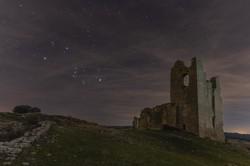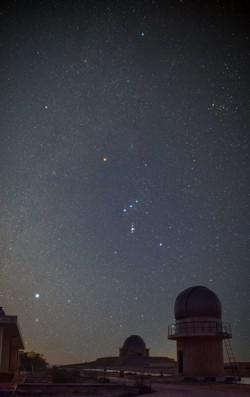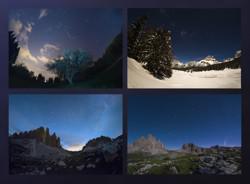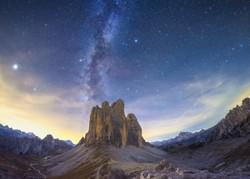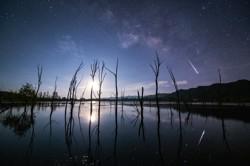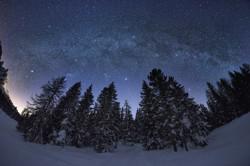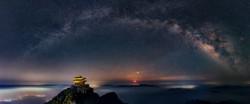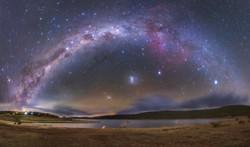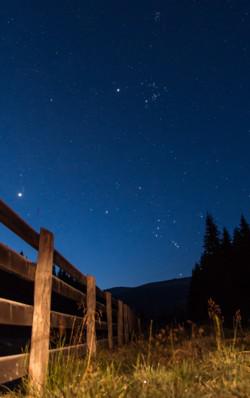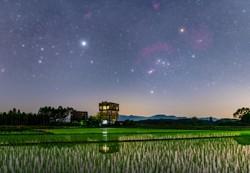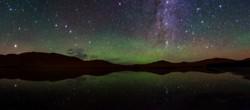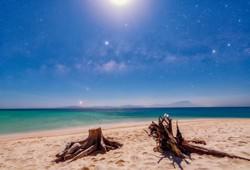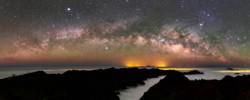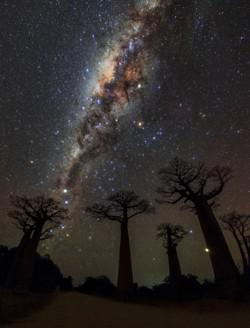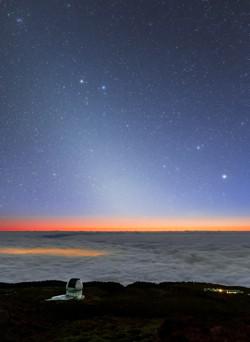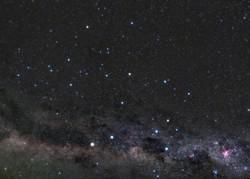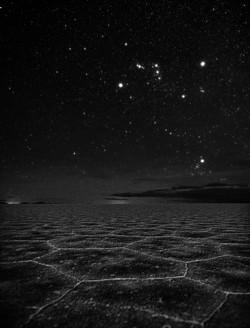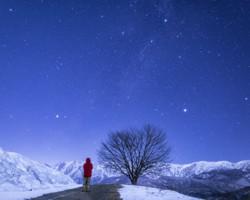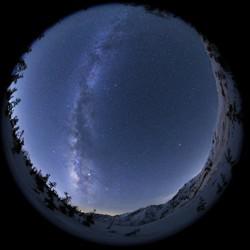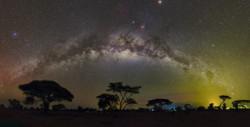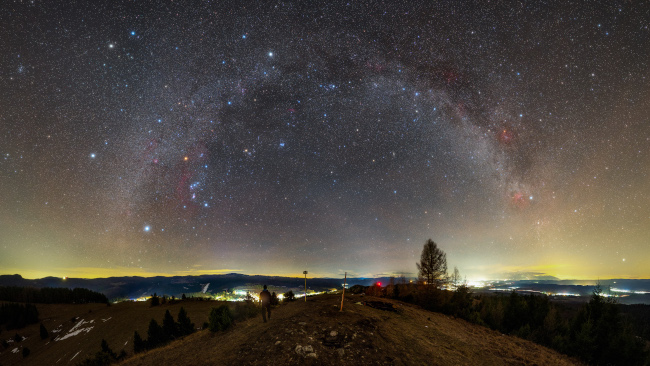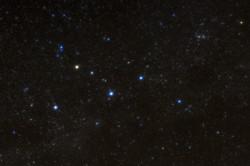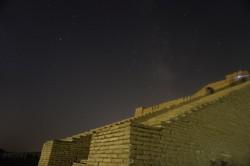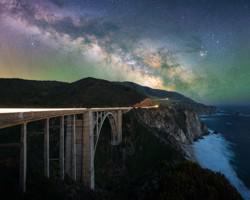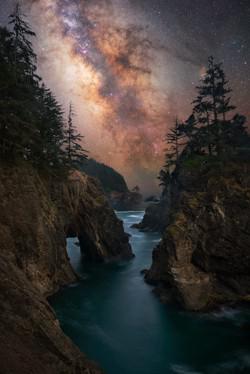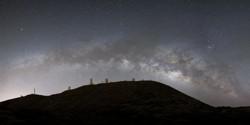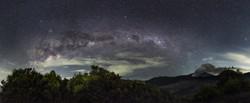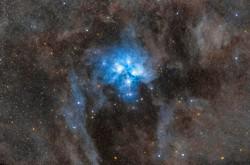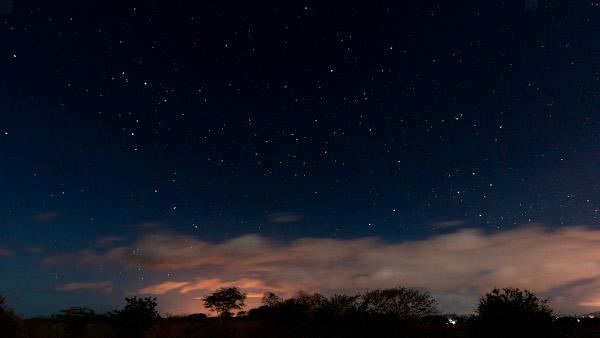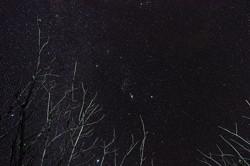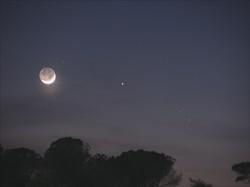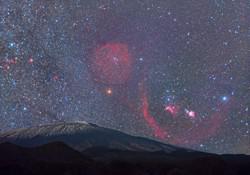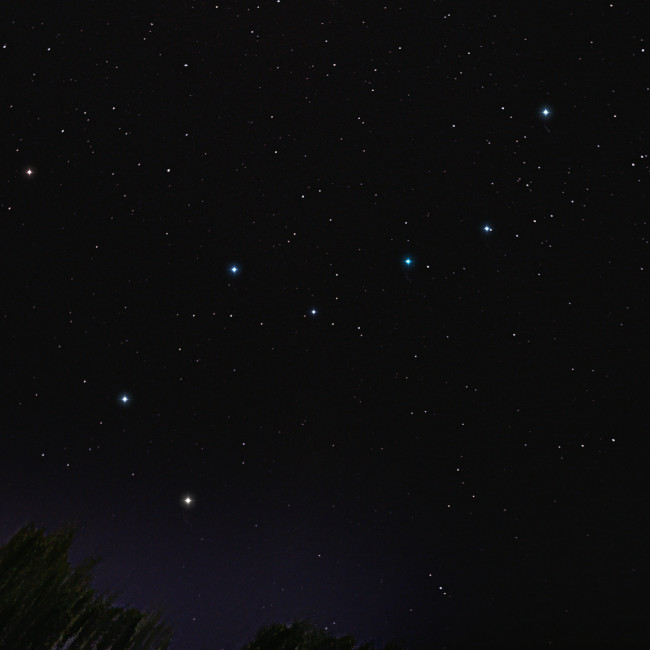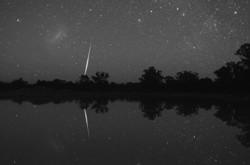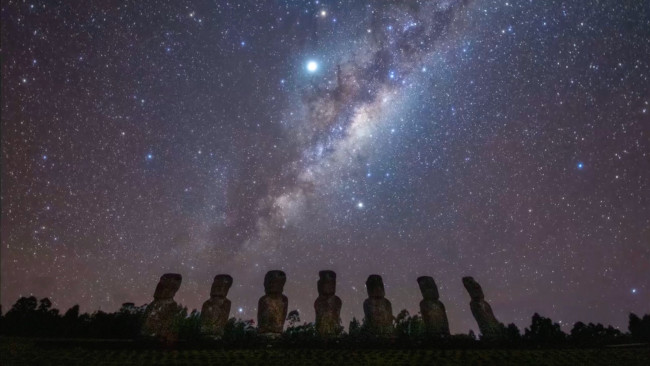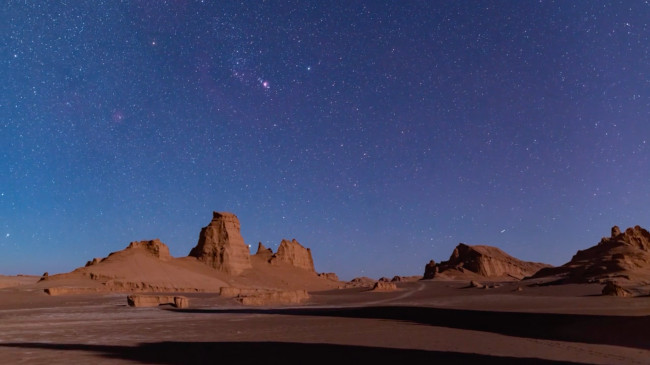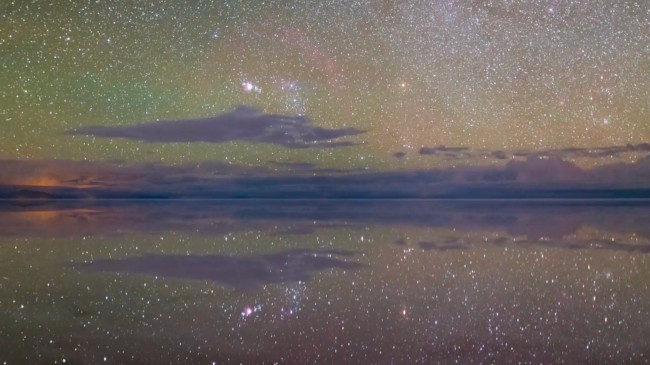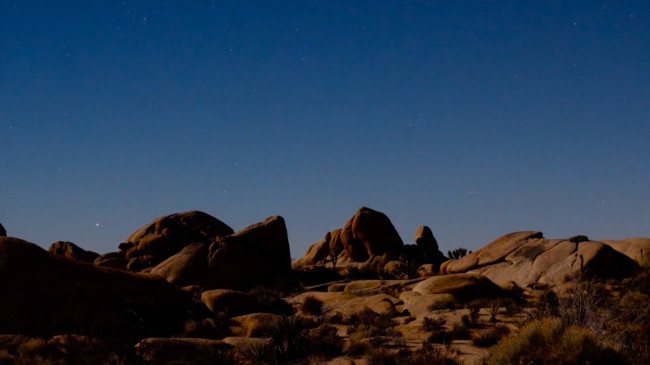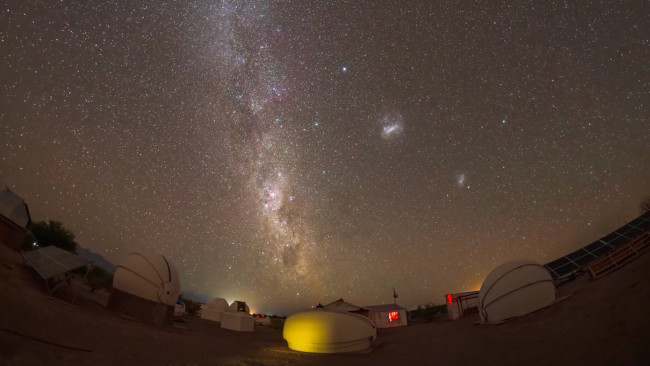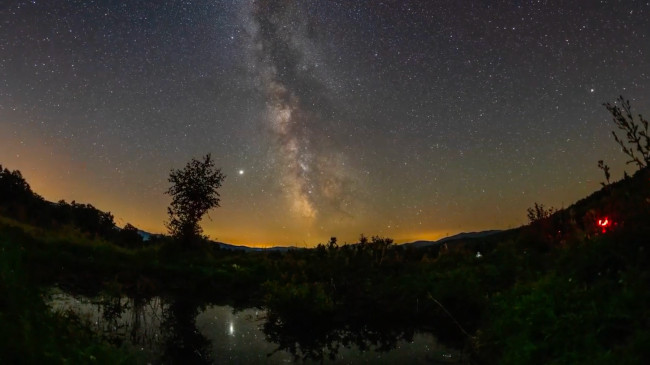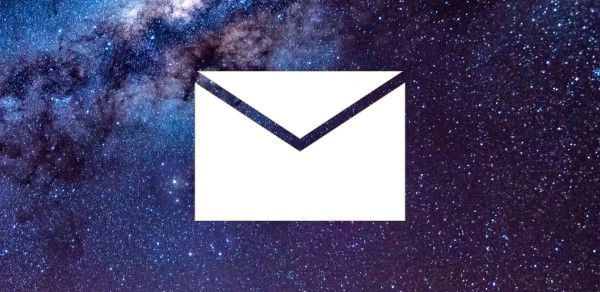Winners of the IAU OAE’s 2022 Astrophotography Contest Announced
Published: 15th December 2022 09:00 (UTC)
The IAU Office of Astronomy for Education (OAE) is today announcing the winners of its 2022 Astrophotography Contest. After being launched in April, the contest received nearly 230 entries from 31 countries around the world. The winning photos and videos, listed below, will expand the OAE’s collection of high-quality educational resources available to astronomy educators globally.
The contest was first held last year, aiming to gather material of educational value on astronomical topics for which high-quality images and videos are not easily accessible to educators. Following on from last year’s success, the OAE held the contest again this year, with the OAE Center Italy as co-sponsor.
Participants were invited to submit still images and time-lapse videos of celestial patterns in the night sky that have cultural significance associated with them. These patterns are of many types and can include asterisms, constellations, dark constellations, dark spots, bright diffuse patterns, and single stars. Participants were free to consider both the constellations officially recognised by the IAU and also non-IAU-constellations.
Susanne Hoffmann, member of the jury, says: “Constellations are historical patterns for making calendars in order to predict local weather and seasonal climate. That’s why every culture has or had its own constellations and the figures relate to the local flora, fauna and landscape of the human ethnical group.”
Livia Giacomini, also a member of the jury and astroEDU editor in chief, says: “Photos of the sky are a very powerful tool to engage young generations in science. This Is the main reason why OAE Center Italy decided to cosponsor the contest and enlarge the collection of astronomical images that in the future can be freely published in school texts, posters and other materials. With astroEdu, the online educational platform by IAU, we are planning to use all these beautiful images of constellations and stars to bring astronomy in the classrooms of the all world.”
Giorgia Hofer, winner in the Still images of celestial patterns category, says: “Astronomy is my greatest passion and it has given me the opportunity to appreciate and love the world and the Dolomites. I am happy that my photos will be a tool for studying the sky.”
Entries were evaluated by an international panel of astrophotographers and astronomy educators, who considered not only the aesthetic and technical aspects, but also the educational value of each entry in the context of primary and secondary school teaching. The three winning entries in the category of time-lapse videos of celestial patterns received cash prizes of €750, €500 and €250 for first, second and third place respectively. In the category of Still images of celestial patterns, 21 winning entries received a prize of €250 each. Participants were encouraged to allow us to publish their images and videos even if they don’t receive a prize, as long as the images and videos are considered by the jury to be of high educational value, resulting in 14 honourable-mention images and three honourable-mention videos.
The winning photos and videos and the honourable mentions are now available under the Creative Commons Attribution (CC BY) 4.0 International License which implies that the authors retain the copyright to their images. This allows their free use as long as proper credits are given (see each image for the credit in the form author/IAU OAE (CC BY 4.0). These images serve as an open educational resource to benefit teachers and learners worldwide.
The winning entries in each category are:
Still images of celestial patterns:
The Kingdom of Orion, by Carlos Zudaire, Spain
Winter Constellations, by Mohamed Aboushelib, Egypt
Big Dipper in Four Seasons, by Giorgia Hofer, Italy
The Pillar of Creation, by Giorgia Hofer, Italy
Lyrid of the Lake, by Jianfeng Dai, China
Winter Milky Way, by Giorgia Hofer, Italy
The Moon and Milky Way Arch Above the Golden Hall, by Likai Lin, China
The Milky Way Over Anglers Reach, by Lucy Yunxi Hu, China
Romanian Orion, by Alex Conu, Romania
Watchtower and Paddy Fields Under the Starry Sky, by Likai Lin, China
Dreamlike Starry Sky and Airglow, by Likai Lin, China
To Guard the Stars and the Sea Together, by Likai Lin, China
Milky Way Arch over La Palma, by Amirreza Kamkar, Germany
Milky Way over Avenue of Baobabs, by Amirreza Kamkar, Germany
Zodiacal Light over GTC Observatory, by Amirreza Kamkar, Germany
Cen-Lup-Cru-Panorama: Centaurus Carrying the Beast and Riding Along the Milky Way, by Uwe Reichert, Germany
Luminous Salar de Uyuni, by Stephanie Ye Ziyi, China
Forgoing the Summer Triangle as it Sets in the Early Winter Evening, by Kouij Ohnishi, Japan
The Milky Way Across the Zenith, by Kouij Ohnishi, Japan
Milky Way Arch over Amboseli National Park, by Amirreza Kamkar, Germany
Warm Winter Night Over Spiš Region, by Robert Barsa, Slovakia
Honourable-mention images:
Portrait of Bat, by Thanakrit Santikunaporn, Thailand
Galaxy Arm, by Ruqayah Mohammed, Iraq
Drive, by Marcin Zajac, Poland
Oregon Coast, by Marcin Zajac, Poland
Teide Observatory, by Curd-Christian Tengeler, Germany
Equatorial Milky Way, by Giorgia Hofer, Italy
The Pleiades M45 with Majestic Dust, by Mohamed Usama, Egypt
Most Brightest Stars of the Sky, by Giorgia Hofer, Italy
Sky Over the Town of Nindirí, in Masaya, Nicaragua, by René Antonio Urroz Álvarez, Nicaragua
The Hunter in the Forest, by by René Antonio Urroz Álvarez, Nicaragua
Moon-Mercury-Pleiades Conjunction, Giulio Colombo, Italy
Orion Rises Over Mount Etna, Dario Giannobile, Italy
Big Dipper, by Arya Anthony, India
Between Two Skies, by Fabrizio Melandri, Italy
Time-lapse videos of celestial patterns:
First place: Southern Sky, by Jianfeng Dai, China
Second place: Winter Constellations, by Amirreza Kamkar, Germany
Third place: Constellation from the World, by Stephanie Ye Ziyi, China
Honourable-mention videos:
The Culmination of Canopus, by Fabrizio Melandri, Italy
Chilean Nights, by Robert Barsa, Slovakia
Flowing Night Sky, by Robert Barsa, Slovakia
More information
The IAU is the international astronomical organisation that brings together more than 12 000 active professional astronomers from more than 100 countries worldwide. Its mission is to promote and safeguard astronomy in all its aspects, including research, communication, education and development, through international cooperation. The IAU also serves as the internationally recognised authority for assigning designations to celestial bodies and the surface features on them. Founded in 1919, the IAU is the world's largest professional body for astronomers.
The IAU Office of Astronomy for Education is hosted at Haus der Astronomie (HdA), managed by the Max Planck Institute for Astronomy. The OAE’s mission is to support and coordinate astronomy education by astronomy researchers and educators, aimed at primary or secondary schools worldwide. HdA’s hosting the OAE was made possible through the support of the German foundations Klaus Tschira Stiftung and Carl-Zeiss-Stiftung.
The OAE is supported by a growing network of OAE Centers and OAE Nodes, collaborating to lead global projects developed within the network. The OAE Centers and Nodes are: the OAE Center China–Nanjing, hosted by the Beijing Planetarium (BJP); the OAE Center Cyprus, hosted by Cyprus Space Exploration Organization (CSEO); the OAE Center Egypt, hosted by the National Research Institute of Astronomy and Geophysics (NRIAG); the OAE Center India, hosted by the Inter-University Centre for Astronomy and Astrophysics (IUCAA); the OAE Center Italy, hosted by the National Institute for Astrophysics (INAF); the OAE Node Republic of Korea, hosted by the Korean Astronomical Society (KAS); OAE Node France at CY Cergy Paris University hosted by CY Cergy Paris University; and the OAE Node Nepal, hosted by the Nepal Astronomical Society (NASO).
Share on:
Contacts
Eduardo Monfardini PenteadoOAE Main Office
Coordinator
penteadoatastro4edu.org
Lars Lindberg Christensen
IAU Director of Communications
lars.christensenatnoirlab.edu
